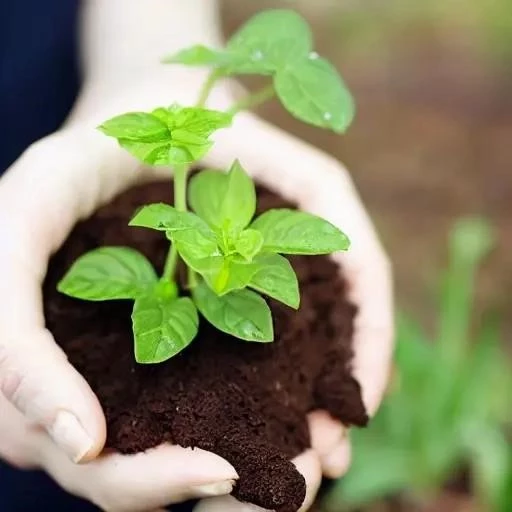In an increasingly digitized world, the profound satisfaction derived from connecting with nature, from coaxing life from the soil, remains an unparalleled joy. Many dream of a flourishing garden, a vibrant oasis of their own making, yet the perceived complexity often deters aspiring horticulturists before they even sow their first seed. The notion that gardening demands years of experience or an innate ‘green thumb’ is a pervasive myth, one that we are here to decisively debunk. Imagine stepping outside to pluck fresh, crisp lettuce for your salad, or admiring a burst of colorful blooms you nurtured from a tiny seedling; this vision is remarkably accessible, awaiting only your enthusiastic engagement.
Embracing the world of home cultivation, even with just a few pots on a balcony or a small patch in your backyard, offers immeasurable rewards – from enhanced well-being and a deeper appreciation for the natural world to the sheer delight of harvesting your own produce. While the journey might present minor challenges, the fundamental principles of successful gardening are surprisingly straightforward and, when approached with a forward-looking mindset, incredibly effective. This guide is crafted to demystify the process, providing essential beginner gardening tips & tricks that will empower you to cultivate not just plants, but a thriving, enriching new passion. Prepare to transform barren patches into bountiful havens, discovering the inherent gardener within you.
Essential Foundations for the Aspiring Gardener
Before delving deeper into specific techniques, understanding the core elements that underpin all successful gardening ventures is crucial. This table outlines the foundational knowledge every beginner should grasp.
| Category | Key Information for Beginners | Why It Matters |
|---|---|---|
| Site Selection & Soil | Choose a spot with adequate sunlight (6+ hours for most vegetables and flowering plants). Test your soil; healthy, well-draining soil is the indispensable foundation for thriving plants. Amend with organic compost to enrich its structure and nutrient content. | Proper light ensures efficient photosynthesis, vital for plant growth. Rich, well-draining soil provides essential nutrients, prevents waterlogging, and allows roots to breathe, significantly impacting plant vigor. |
| Plant Selection | Start with easy-to-grow, resilient varieties like herbs (basil, mint, rosemary), leafy greens (lettuce, spinach, kale), radishes, bush beans, or cheerful marigolds and zinnias. Always consider your local climate zone and season. | Achieving early success with forgiving plants builds confidence and prevents discouragement. Matching plants to your specific climate and growing conditions drastically reduces stress on the plants and increases yield. |
| Watering Techniques | Water deeply and less frequently, rather than shallowly every day. Always check soil moisture a few inches down before watering to avoid over or under-watering. Early morning is often the optimal time to water. | Deep watering encourages roots to grow further down, making plants more resilient to dry spells. Consistent moisture without saturation prevents common issues like root rot and fungal diseases while minimizing evaporation; |
| Essential Tools | A sturdy hand trowel, comfortable gardening gloves, a watering can or hose with a gentle spray nozzle, sharp bypass pruners, and a small hand fork are excellent starting points. A compost bin is an optional but highly recommended addition. | Having the right, ergonomic tools makes gardening tasks significantly easier, more efficient, and prevents unnecessary strain or injury, allowing you to enjoy the process more fully. |
| Pest & Disease Management | Regularly observe your plants for any signs of distress. Utilize organic solutions like neem oil or insecticidal soap for common pests. Ensure good air circulation around plants to proactively prevent fungal issues. | Early detection and eco-friendly management methods protect your garden’s health without resorting to harsh chemicals, fostering a balanced and thriving ecosystem that benefits both your plants and local wildlife. |
| Official Resource Link | National Garden Association ⎻ Learn & Grow | |
Cultivating Your Canvas: Preparing for Success
With the foundational knowledge firmly planted, the next step involves preparing your chosen space. Think of your garden as a blank canvas, eagerly awaiting your creative touch. Leading horticulturists consistently emphasize the paramount importance of soil health; it’s the very lifeblood of your garden. By meticulously preparing your soil, a foundational step often overlooked by novices, you are essentially laying a robust groundwork for future botanical triumphs, ensuring that every seed planted has the optimal environment to flourish. Incorporating ample organic matter, such as well-rotted compost or aged manure, dramatically improves soil structure, enhancing drainage in heavy clays and boosting water retention in sandy soils. This simple act profoundly impacts nutrient availability, truly setting your plants up for success from day one.
Furthermore, understanding your garden’s microclimates is incredibly effective. Observe where the sun falls throughout the day, noting shaded spots and sun-drenched areas. This strategic mapping empowers you to place plants where they will naturally thrive, respecting their individual needs for light. Similarly, considering wind patterns can help protect delicate seedlings. A thoughtful approach to placement, guided by these environmental insights, significantly reduces plant stress and maximizes growth potential, fostering a remarkably resilient garden.
Nurturing Growth: Smart Choices and Ongoing Care
Choosing the right plants for a beginner can feel overwhelming, given the vast array available. However, by focusing on remarkably resilient and easy-to-grow varieties, you can ensure early successes that will fuel your gardening passion. Opt for seeds or young plants that are known for their hardiness and straightforward care requirements. Tomatoes, while popular, can be a bit more demanding for absolute beginners; instead, consider the aforementioned leafy greens or root vegetables, which offer quick gratification and are surprisingly forgiving. This strategic selection builds confidence, preparing you for more adventurous planting in seasons to come.
Ongoing care, though seemingly complex, boils down to consistent observation and gentle intervention. Regular, deep watering, as previously highlighted, is crucial, but equally important is monitoring your plants for signs of pests or diseases. A daily walk through your garden, keenly observing the leaves, stems, and soil, can catch issues before they escalate. Early detection, paired with organic pest control methods like hand-picking larger insects or applying insecticidal soap, can prevent widespread damage. Remember, a thriving garden is not just about planting; it’s about forming a relationship with your plants, understanding their subtle cues, and responding with informed care. This proactive engagement transforms gardening from a chore into a deeply meditative and rewarding practice, promising continuous learning and endless fascination.
Harvesting the Rewards: Cultivating a Lifelong Passion
The journey from a hopeful beginner to a confident gardener is incredibly fulfilling, marked by small triumphs and continuous learning. Each sprouted seed, every ripening fruit, and every vibrant bloom represents a testament to your dedicated effort and the astonishing power of nature. By integrating these fundamental beginner gardening tips & tricks into your practice, you are not merely cultivating plants; you are cultivating patience, resilience, and a profound connection to the earth beneath your feet. The fresh air, the physical activity, and the mental serenity derived from tending a garden are benefits that extend far beyond the harvest, enriching your life in myriad ways.
Looking forward, your gardening journey promises an exciting evolution. As you gain experience, you’ll feel empowered to experiment with new varieties, tackle more intricate projects, and perhaps even contribute to local food movements. This isn’t just a hobby; it’s an investment in your well-being, a commitment to sustainability, and an opportunity to create beauty in your immediate environment. So, grab your trowel, embrace the soil, and embark on this wonderfully rewarding adventure. The revolutionary transformation awaiting you, both in your garden and within yourself, is truly boundless. The time to unearth your green thumb and cultivate your future is now.






